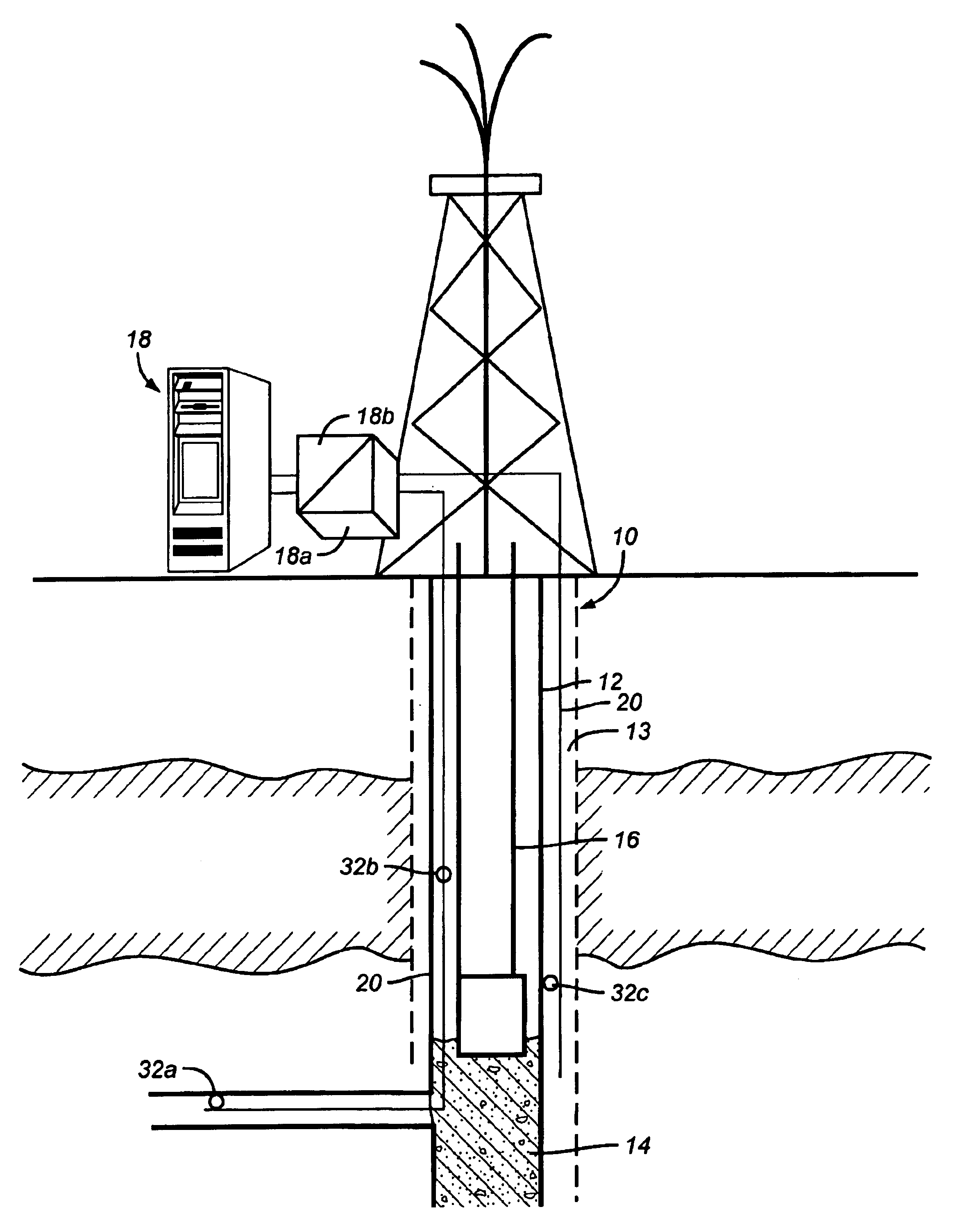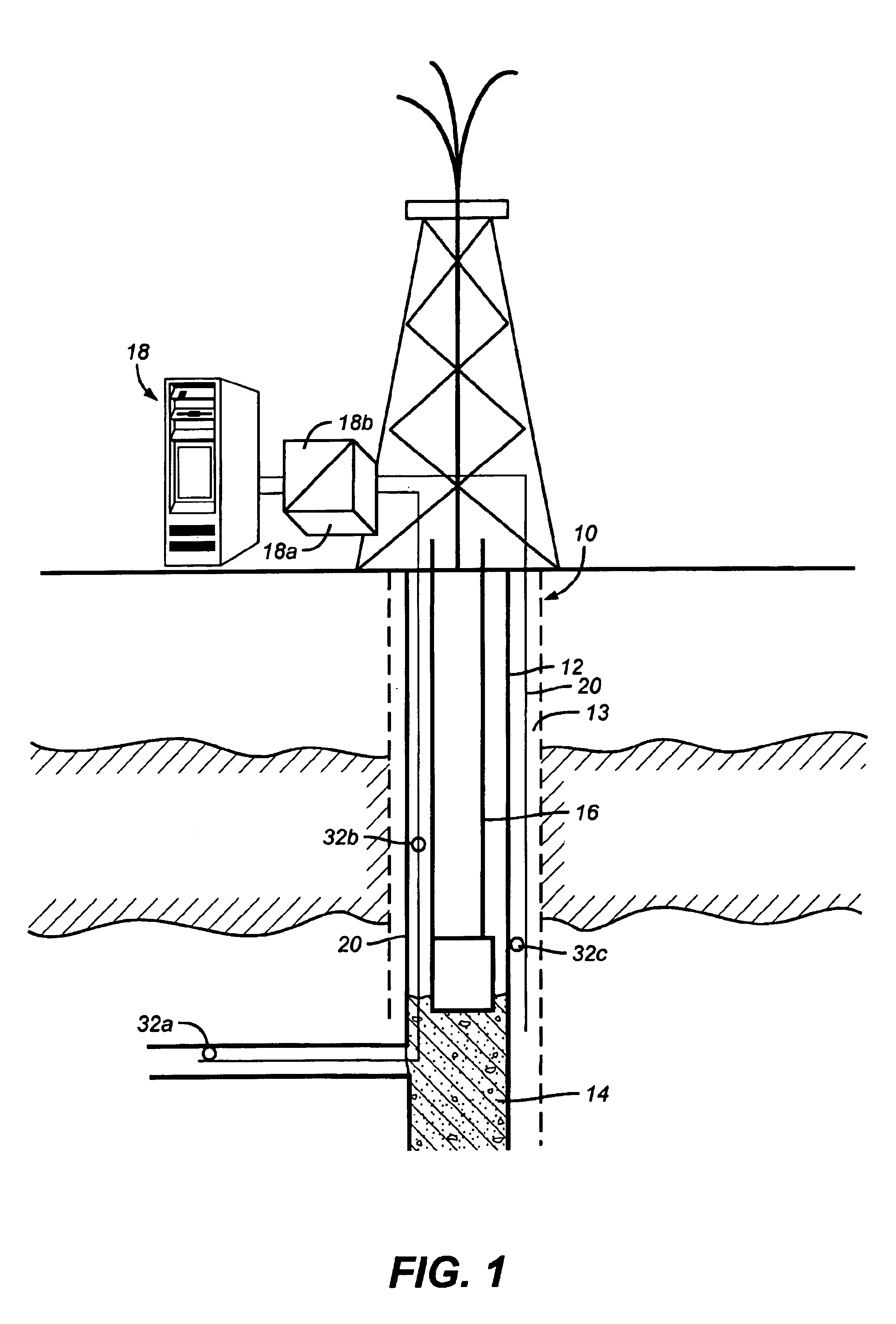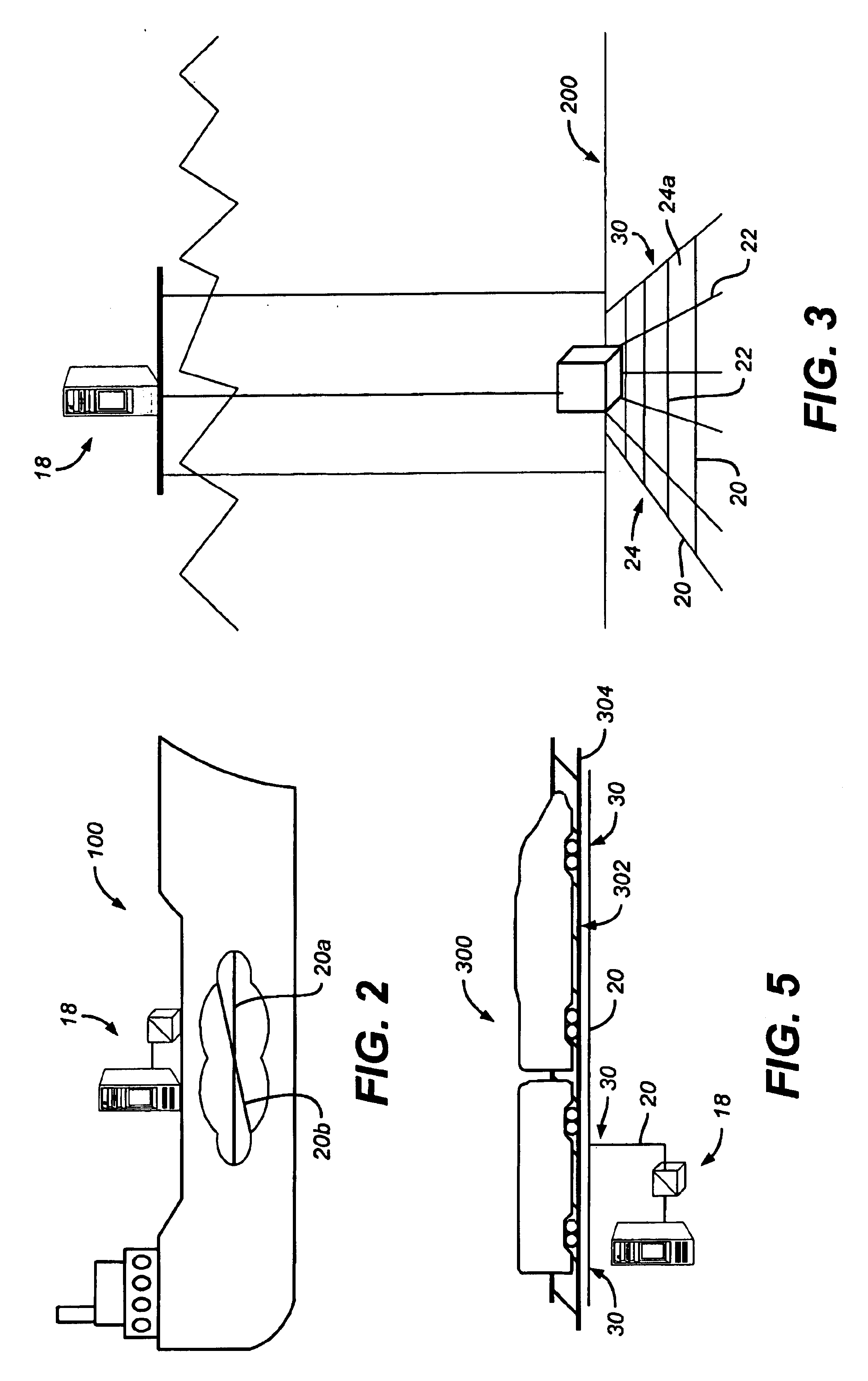Method and system for monitoring smart structures utilizing distributed optical sensors
a distributed optical sensor and smart structure technology, applied in the measurement field, can solve the problems of many prior art sensors being electromechanical and cannot be placed into environments, many prior art sensors are too expensive, too dangerous, etc., and achieve the effects of not being able to meet the needs of us
- Summary
- Abstract
- Description
- Claims
- Application Information
AI Technical Summary
Problems solved by technology
Method used
Image
Examples
Embodiment Construction
[0045]In general, throughout this description, if an item is described as implemented in software, it can equally well be implemented as hardware.
[0046]Although the oil and gas industry is used for exemplary reasons herein, the present invention's features and improvements apply to many fields including, by way of example and not limitation, monitoring stress and strain in structures such as nautical vessels 100 (shown in an exemplary representation in FIG. 2), roadways or railroad systems (shown in an exemplary representation in FIG. 5); monitoring stress and strain of structures located undersea, including evaluating methane hydrate stability undersea (shown in an exemplary schematic in FIG. 3 and FIG. 4); monitoring and testing drill stems; external monitoring and testing of wellbore tools such as casing packers, e.g. to insure that the cement was cured properly and the packer is sealing; monitoring reservoirs using pressure, temperature, and flow meters including build up and dr...
PUM
 Login to View More
Login to View More Abstract
Description
Claims
Application Information
 Login to View More
Login to View More - R&D
- Intellectual Property
- Life Sciences
- Materials
- Tech Scout
- Unparalleled Data Quality
- Higher Quality Content
- 60% Fewer Hallucinations
Browse by: Latest US Patents, China's latest patents, Technical Efficacy Thesaurus, Application Domain, Technology Topic, Popular Technical Reports.
© 2025 PatSnap. All rights reserved.Legal|Privacy policy|Modern Slavery Act Transparency Statement|Sitemap|About US| Contact US: help@patsnap.com



